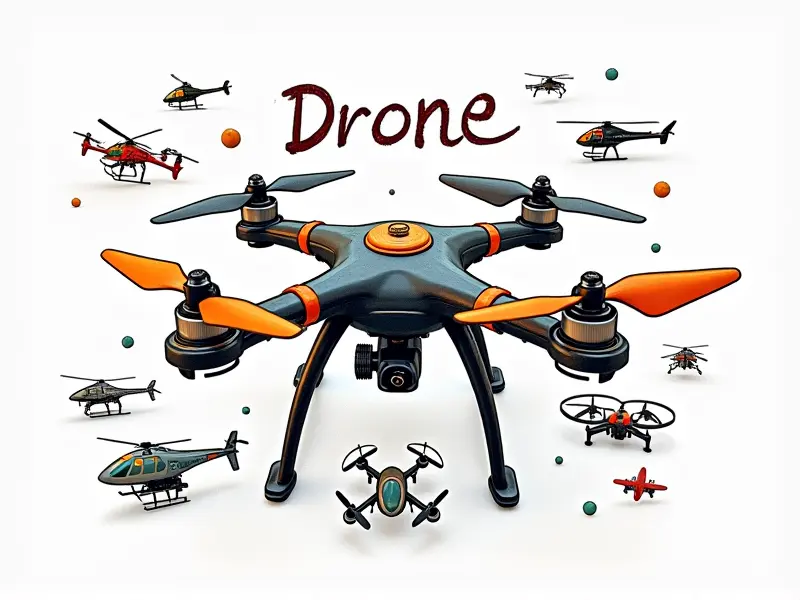Recalibrating GPS for drones

Mastering Drone GPS Calibration in Minutes
Drone GPS calibration is a critical step to ensure your drone operates with precision and accuracy. Properly calibrated GPS settings can significantly enhance flight stability, reduce drift, and improve overall performance. Whether you're a beginner or an experienced pilot, understanding how to recalibrate your drone's GPS settings is essential.
Optimize Your Drone's GPS Settings
To optimize your drone’s GPS settings, follow these steps:
- Initial Setup: Before flying, ensure that your drone has a stable and strong connection to the Global Positioning System (GPS). This includes having at least four satellites in view.
- Calibration Routine: Perform the initial calibration process as recommended by your drone manufacturer. This usually involves setting up the GPS module and aligning it with magnetic north.
- Software Updates: Keep your drone's firmware updated to ensure compatibility with the latest GPS algorithms and features.
Perfect GPS Lock Every Time
Achieving a perfect GPS lock is crucial for reliable flight operations. Here’s how you can do it:
- Select Optimal Locations: Choose open areas with minimal obstacles to ensure clear satellite visibility.
- Maintain Battery Levels: Ensure your drone's battery level is sufficient before starting the calibration process, as low power can affect GPS performance.
- Regular Calibration: Periodically recalibrate your drone’s compass and gyroscope to maintain accuracy over time.
Easy Guide to Resetting Drone GPS
If you encounter issues with your drone's GPS, resetting it can often resolve the problem. Here’s a step-by-step guide:
- Power Off the Drone: Turn off the power and wait for at least 30 seconds.
- Reset Settings: Refer to your drone's manual or manufacturer guidelines on how to reset GPS settings without losing other critical data.
- Re-calibrate: After resetting, perform a fresh calibration process as described in the initial setup steps.
Fixing GPS Issues in Drones Easily
Troubleshooting common GPS issues can be straightforward with these tips:
- Weak Signal: If you experience a weak signal, move to an area with fewer obstructions and better satellite visibility.
- Magnetic Interference: Check for magnetic interference from nearby metal objects or electronic devices that could affect your drone’s compass calibration.
- Battery Health: Ensure the battery is in good condition and not causing any performance issues.
Calibrate Drone GPS for Precision
To calibrate your drone's GPS for precision, follow these steps:
- Initial Alignment: Align the drone’s compass with magnetic north to ensure accurate orientation.
- Satellite Acquisition: Ensure that at least four satellites are acquired before starting any flight operations.
- Periodic Checks: Regularly check and recalibrate GPS settings to maintain accuracy, especially if you frequently change locations or fly in different environments.
Top Tips for Drone GPS Setup
Here are some top tips for setting up your drone’s GPS system effectively:
- Clear Environment: Always choose a clear, open area free from tall buildings or dense foliage that can obstruct satellite signals.
- Proper Orientation: Ensure the drone is oriented correctly with respect to magnetic north for accurate GPS readings.
- Software Compatibility: Make sure your drone’s firmware and software are up-to-date to support advanced GPS features.
Ensure Accurate GPS on Drones
To ensure that your drone's GPS is as accurate as possible, follow these best practices:
- Daily Calibration: Perform a daily calibration routine to maintain optimal performance and accuracy.
- Monitor Battery Levels: Keep an eye on battery levels during flights; low power can affect GPS signal strength.
- Avoid Interference: Be aware of potential sources of interference such as metal objects or electronic devices that may impact GPS accuracy.
Quick Fixes for Improving Drone GPS Accuracy
If you're looking to quickly improve your drone's GPS accuracy, try these methods:
- Satellite Visibility: Ensure clear visibility of satellites by positioning the drone in an open area.
- Firmware Updates: Keep firmware up-to-date to benefit from improvements and bug fixes related to GPS performance.
- Data Logging: Use data logging features if available, to track and analyze GPS accuracy over time.
Simplified Process of Drone GPS Recalibration
The process of recalibrating your drone’s GPS can be simplified by following these steps:
- Power Off the Device: Turn off the power and wait for a few moments.
- Check Manuals: Consult your drone's user manual or manufacturer guidelines for specific recalibration instructions.
- Perform Calibration: Follow the recommended steps to reset and calibrate GPS settings, ensuring all necessary parameters are correctly set.
Boost Accuracy: Recalibrate Drone GPS Now
To boost your drone's GPS accuracy, recalibration is key. By following this guide, you can ensure that your drone operates with the highest level of precision and reliability. Whether you’re a professional photographer or an enthusiast looking to improve flight stability, recalibrating your GPS settings will make a significant difference in your aerial photography and videography experience.
Conclusion
In conclusion, mastering the art of GPS calibration for drones is crucial for achieving optimal performance and accuracy. By following these steps and tips, you can ensure that your drone’s GPS system operates at its best, providing reliable navigation and stability during flights. Regular maintenance and recalibration will help maintain this precision over time, enhancing both safety and operational efficiency.

